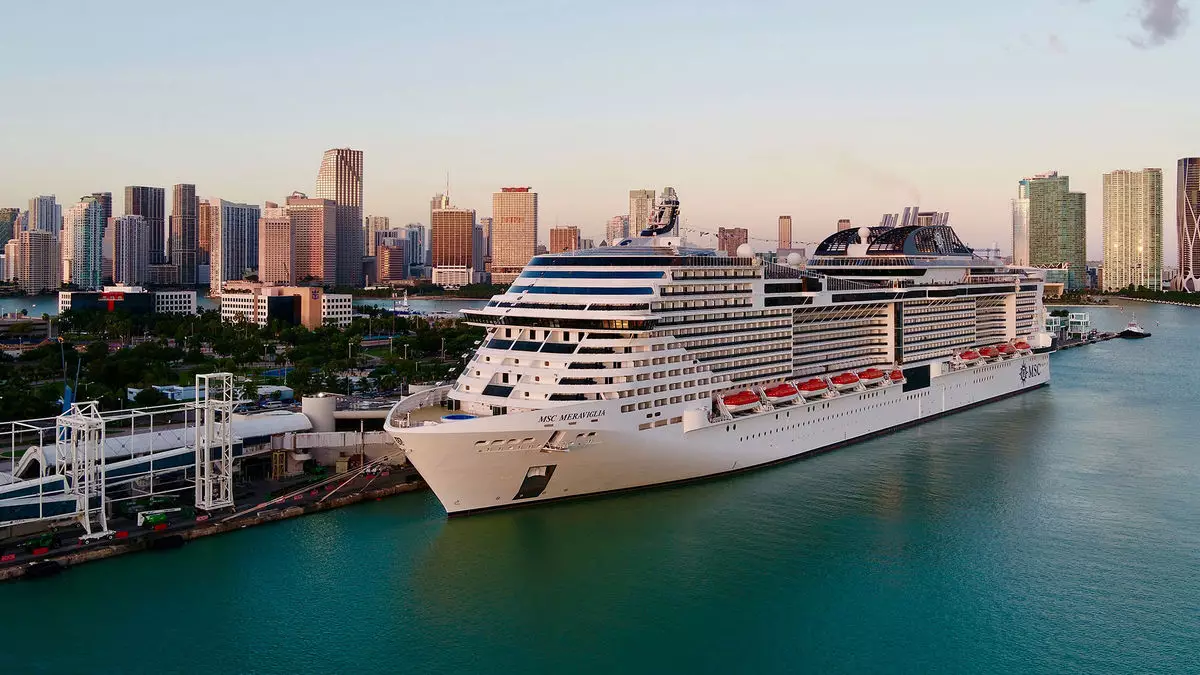The decision to relocate the MSC Meraviglia from New York City to Miami symbolizes a broader shift in the cruise industry’s strategic approach to capturing lucrative Caribbean and North American markets. While the move may seem to be a logistical decision driven by operational efficiency, it fundamentally underscores MSC Cruises’ aggressive push for market dominance in the Caribbean sector. Moving away from the traditionally bustling New York market, the cruise line is recalibrating its focus toward the warmer and more consistent winter cruise season in Miami, a hub notorious for its vibrant cruise traffic and infrastructure. This repositioning also highlights an industry trend: cruise lines are increasingly prioritizing ports that offer more predictable weather patterns and higher passenger demand, rather than relying solely on seasonal metropolitan departures.
The cancellation of bookings from New York reflects a calculated gamble—shifting resources to Miami might temporarily disrupt customer plans, but it positions MSC for long-term growth. MSC’s move signals a recognition of Miami’s status as a cruise gateway, where competition is intensifying but opportunity abounds. Furthermore, the decision reveals an understanding that the Caribbean market is not only resilient but also highly profitable, especially with the addition of more ships deploying to the region. This strategic repositioning is not simply about where ships sail from; it is about aligning the entire operation to maximize revenue streams and meet evolving traveler preferences.
Expanding Fleet Presence and Market Share
The planned increase to four MSC ships in Miami this winter underscores the cruise line’s confidence in the market’s potential. The growth from three ships last season to four demonstrates an ambition to dominate the Caribbean cruise landscape, especially during peak winter months when demand soars. This expansion is also intertwined with MSC’s broader fleet development strategy, which emphasizes diversification and increased frequency of port visits to excite seasoned cruisers and attract new customers.
The introduction of new ships navigating the Caribbean is all about competition. MSC’s rivals—other major cruise lines like Royal Caribbean, Carnival, and Norwegian—are also escalating their presence in the region. MSC’s strategic emphasis on Miami and Caribbean ports like Galveston and Port Canaveral reflects their understanding that travelers crave more diverse itineraries and exclusive ports of call. The line’s emphasis on exotic destinations like Amber Cove and Grand Turk, combined with longer itineraries that include multiple islands, positions MSC as a compelling alternative for luxury-seeking cruisers eager for immersive experiences. The focus on more visits means the brand is capitalizing on the popularity of the region’s natural beauty and entrepreneurial port development efforts—making each cruise more attractive and differentiated.
The Allure of the Caribbean and the Role of Innovation
The Caribbean itineraries offered by MSC Meraviglia signal a nuanced understanding of traveler preferences. The seven-night voyages that visit a variety of islands—St. Maarten, St. Kitts, St. Thomas, Antigua—are crafted strategically to blend cultural exploration with leisure. The inclusion of Ocean Cay, MSC’s private island in the Bahamas, illustrates how the cruise line is innovating not just in itineraries but also in creating exclusive experiences that foster brand loyalty. The private destination adds an element of control and luxury, giving MSC an edge in the competitive market.
However, this move also invites critical reflection. While the expansion into Miami and the Caribbean promises increased profitability, it risks alienating certain loyal customers who prefer the New York departure for its proximity and urban appeal. The industry’s evolution seems to favor bold, market-driven decisions over the traditional cruise booking comfort zone. Time will tell if MSC’s aggressive growth strategy strikes the right balance between innovation and customer retention—an essential factor for sustained success.
Ultimately, MSC Cruises’ shift from New York to Miami reflects a confident recalibration towards more aggressive expansion in a high-demand region. While this entails risks like disrupted itineraries and the challenge of standing out amongst fierce competitors, it signals their readiness to adapt and thrive amid the increasingly competitive cruise industry landscape.


Leave a Reply